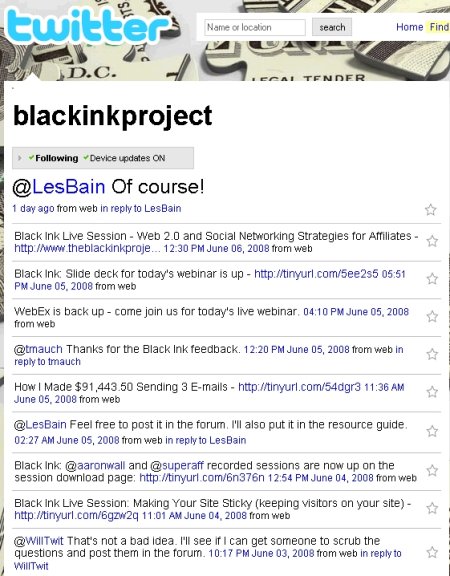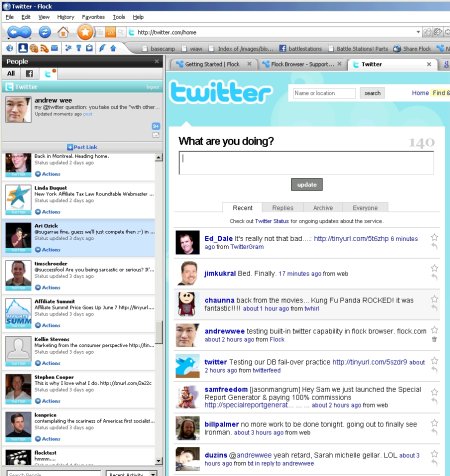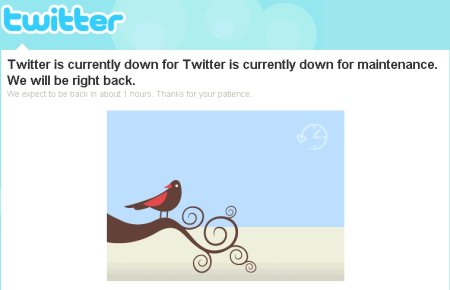The Twitter team has been working overtime with fixes intended to resolve the growing pains associated with the microblogging service, with regular updates at the Twitter blog and the Twitter status blog.
I am a little surprised and disappointed that several core Twitter features have been disabled in the interim.
The loss of private messaging I can live without (for the short term), but what happens when you are handicapped in your ability to follow conversations?
Witness the page for Jeremy Palmer’s Black Ink Project:

The pages show the twits originating from Jeremy, but the “With others” tab which you could click on and see the 2-way conversation is now missing.
If you want to track the conversation, you’d have to hit the “in reply to” hyperlink.
[At least that’s how I remember how I used to track conversations…]
So if you’d like to follow an active Twitter user, you’d be hitting the “in reply to” link pretty often and opening up a bunch of windows and study the timestamps and figure out the chronological sequences.
I may be wrong, but I thought the purpose of these technologies was to make things easier, rather than give me some weird sudoku-like puzzle to figure out what goes where?
–
Having installed the latest version of the Flock social web browser (based on the Mozilla code, which Firefox is based from), I noticed that there’s an integrated Twitter module.
Take a look at the left column:

I can imagine the amount of resource load this is going to cause to Twitter’s servers via the API as updates are pulled up from all the people I’m following…
Together with other Twitter API intensive apps like Tweetscan, is it any wonder why Twitter is being continually brought to its knees?
Here’s an idea… why not restore full functionality to the Twitter’s web interface and block off or severely restrict API access to a couple of trusted sites, or impose quota on them?
Better yet, charge for CPU processing units or API calls like on an ASP model?
Content IS valuable, and Twitter parceling out data on a no-hold-barred basis is going to result in ridiculous quality of service, destroying its reputation in the interim.
Remember how ridiculous MySpace used to be when it was popular? It could take 2 minutes for profile to load (if I didn’t get timed out). I certainly hope we’re not going to see Twitter turn into MySpace 2.0!
If it’s any consolation, Facebook has been facing similar growing pains too, with the “white screen of death” being a familiar refrain among certain segments of FB users.
–
So here’s an interesting idea.
Instead of continually looking at ways to scale your server farm, move onto a distributed/grid computing model, why not look at a viable model of operating the business? Charging for API access if needed?
Parkinson’s Law states that work expands to fill the time available, in the hard disk context – data expands to fill the available storage. Similarly in the social network context, resource demand will balloon up to eat all available resources alive.
If the overcapacity fix is a technology-based one, rather than a systematic, business-oriented decision, we’ll have to be content with seeing this fella around:


IT’S ME
hello twitter
584
This kind of game gives a real experience of building a farm and planting trees.
At present, you have the opportunity not only to communicate but also to have fun
in social networks. Procedures to developing a cell phone game start by creating
a plan, followed by creating the artwork,
then developing your own gameplay, next is combining the artwork and gameplay, and lastly
is by posting your brand new game on the web for income.